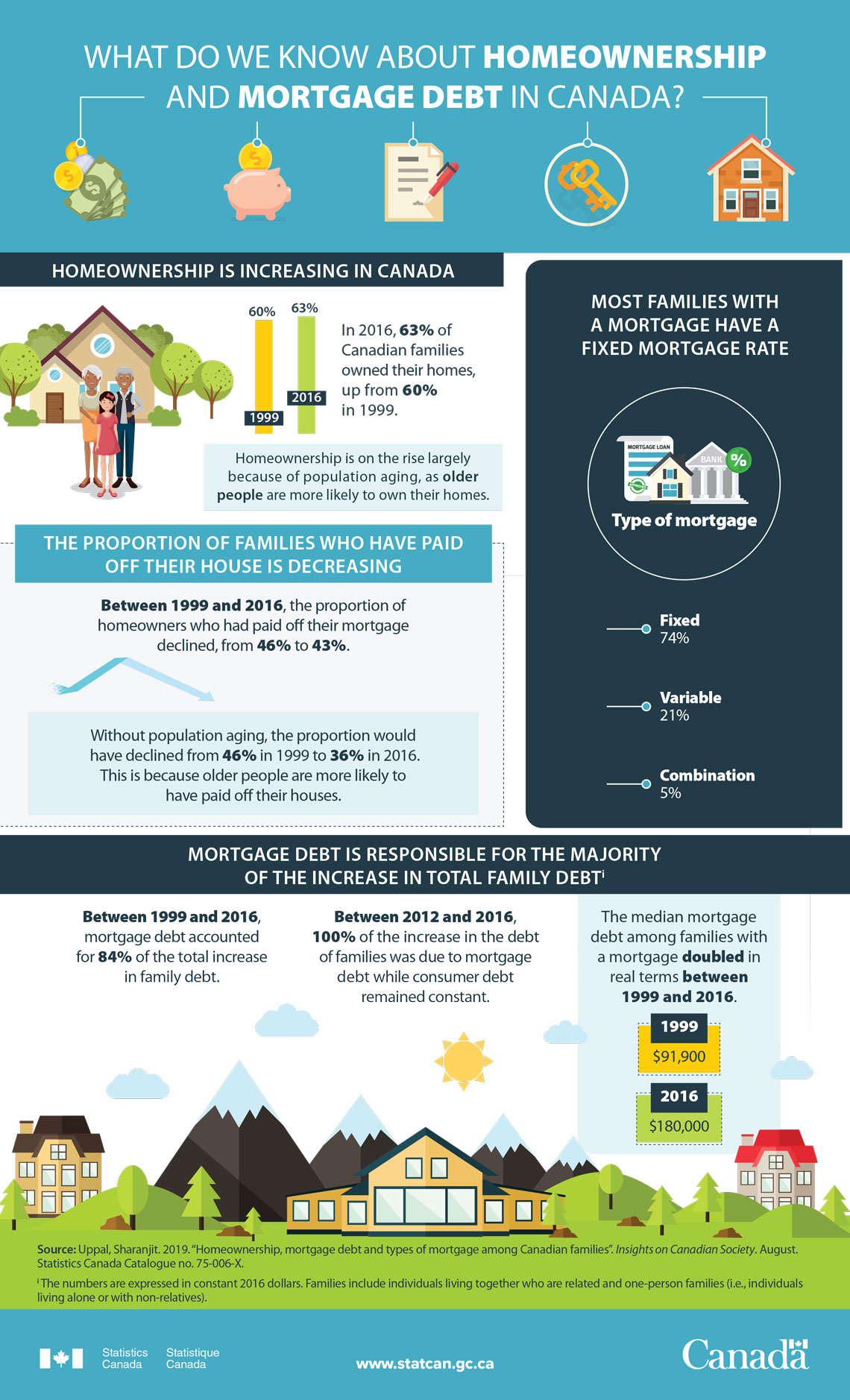What do we know about homeownership and mortgage debt in Canada?
Archived Content
Information identified as archived is provided for reference, research or recordkeeping purposes. It is not subject to the Government of Canada Web Standards and has not been altered or updated since it was archived. Please "contact us" to request a format other than those available.

Description: What do we know about homeownership and mortgage debt in Canada?
What do we know about homeownership and mortgage debt in Canada?
Homeownership trends in Canada
In 2016, 63% of Canadian families owned their homes, up from 60% in 1999.
Homeownership is on the rise largely because of population aging, as older people are more likely to own their homes.
The proportion of families who have paid off their house is decreasing
Between 1999 and 2016, the proportion of homeowners who had paid off their mortgage declined, from 46% to 43%.
Without population aging, the proportion would have declined from 46% in 1999 to 36% in 2016. This is because older people are more likely to have paid off their houses.
Most families with a mortgage have a fixed mortgage rate
| Type of mortgage rate | Proportion of families (%) |
|---|---|
| Fixed | 74 |
| Variable | 21 |
| Combination | 5 |
Mortgage debt is responsible for the majority of the increase in total family debtFootnote 1
Between 1999 and 2016, mortgage debt accounted for 84% of the total increase in family debt.
Between 2012 and 2016, 100% of the increase in the debt of families was due to mortgage debt while consumer debt remained constant.
The median mortgage debt among families with a mortgage doubled in real terms between 1999 and 2016.
| Year | Median mortgage debt |
|---|---|
| 1999 | $91,900 |
| 2016 | $180,000 |
Source: Uppal, Sharanjit. 2019."Homeownership, mortgage debt and types of mortgage among Canadian families." Insights on Canadian Society. August. Statistics Canada Catalogue no. 75-006-X.
- Date modified:
